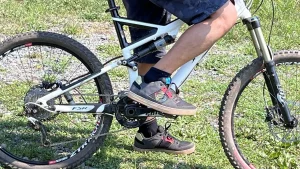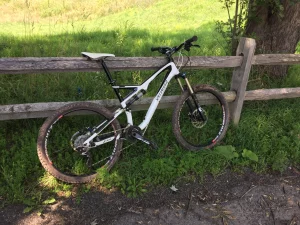Tips for Preventing Thumb Pain When Cycling

Table of Contents
Why Bikers Often Experience Thumb Pain
Here are some common reasons:
- Handlebar Grip and Position: A handlebar that’s too low or too far away can place excessive pressure on the thumb and wrist, increasing the risk of injury. The way cyclists grip the handlebars can place continuous pressure on the ulnar nerve, which runs through the hand and into the thumb. This pressure can lead to numbness, tingling, or pain, a condition often referred to as “handlebar palsy“.
- Repetitive Motion:
– Shifting Gears: Frequent gear shifting requires repetitive thumb movements, especially on bikes with flat handlebars with thumb shifters, which can lead to strain and overuse injuries over time.
– Braking: Continuous use of the brakes, especially in areas with lots of stop-and-go traffic or downhill riding, can also contribute to thumb strain. - Impact and Vibration:
– Road Vibration: Long rides on uneven or rough surfaces cause vibrations that are transmitted through the bike to the hands. Over time, this can cause cumulative stress and injury to the thumbs.
– Falls and Accidents: Direct impact from falls or collisions can result in acute thumb injuries such as fractures, sprains, or dislocations. - Poor Bike Fit and Ergonomics:
– Improper Handlebar Height or Reach: A poorly adjusted bike can force the rider into an uncomfortable position, increasing strain on the thumbs and hands.
– Inadequate Handlebar Padding: Insufficient padding on the handlebars can exacerbate pain in the pressure points and increase the risk of nerve compression and thumb pain. - Lack of Conditioning: Weakness in Hand Muscles and inadequately conditioned hand and thumb muscles can make them more susceptible to fatigue and injury during prolonged cycling.
- Poorly Padded Gloves or Grips: Inadequate padding on gloves or handlebar grips can lead to increased vibration and pressure on the thumb and hand, contributing to discomfort or injury.
- Overuse or Repetitive Stress: Cycling for long periods, especially on rough terrain, can cause repetitive stress and overuse injuries in the thumb joint and surrounding structures.
To prevent thumb injuries, consider the following measures:
- Ensure Proper Bike Fit: Adjust the handlebar height, reach, and position to ensure a comfortable and ergonomic grip.
- Use Padded Gloves and Handlebar Grips**: These can help reduce pressure and absorb vibrations.
- Take Regular Breaks: Resting the hands periodically can help alleviate continuous pressure and reduce the risk of overuse injuries.
- Strengthening Exercises: Regular hand and thumb strengthening exercises can help build endurance and reduce the risk of injury.
- Vary Hand Positions: Changing hand positions on the handlebars frequently can help distribute pressure more evenly and reduce strain on the thumbs.
Changes in Steering Can Help Minimize Thumb Pain During Long Rides
Making adjustments to your steering setup and technique can help minimize thumb pain during long rides.
Here are some changes you can consider:
- Adjust Handlebar Height and Position: Ensure your handlebars are at a comfortable height and distance, allowing you to maintain a slight bend in your elbows. This helps absorb road vibrations and reduces pressure on your thumb and wrist joints. Adjusting the height and angle of your handlebars can help ensure a more natural wrist and thumb position, reducing strain. Higher handlebars can reduce the amount of pressure on your hands. Ensure the reach to the handlebars is appropriate. If you have to stretch too far, it can increase pressure on your thumbs and wrists.
- Use Ergonomic Handlebar Grips: Consider using padded or ergonomic handlebar grips that distribute pressure more evenly across your hands and reduce direct pressure on the thumbs. For mountain bikes, adding bar ends can provide alternative hand positions and help relieve pressure on your thumbs during long rides. For road bikes, aerobars can give you an entirely different position that takes pressure off your hands and thumbs.
- Optimize Shifting Technique: Use a gentle, controlled motion when shifting gears, and avoid relying solely on your thumb to apply force. Utilizing your whole hand can help distribute pressure more evenly.
- Switch Hand Positions Frequently: Regularly change your hand positions on the handlebars to distribute pressure more evenly and prevent overuse of specific muscles and nerves. For road bikes, this means moving between the tops, hoods, and drops. For flat bars, it means changing grip angles.
- Upgrade Grips or Bar Tape: Choose padded, ergonomic grips or bar tape that offers extra cushioning and support, helping to absorb vibrations and reduce pressure on your thumbs.
- Maintain a Relaxed Grip: Avoid gripping the handlebars too tightly, as this can increase pressure on your thumb joint. Instead, focus on maintaining a relaxed grip, which allows for better control and reduced strain.
- Use Quality Gloves: Invest in well-padded cycling gloves that offer additional cushioning and support and help absorb shocks and vibrations from the road, reducing the impact on your hands and thumbs. Gel-padded gloves are an excellent choice for absorbing shock and reducing pressure on your hands. Wearing gloves with adequate padding can
- Suspension Systems: If your bike has a suspension system, make sure it is properly adjusted to help absorb road vibrations. If not, consider a suspension seat post or stem to reduce overall vibrations.
- Periodically Change Hand Position: Regularly change your hand position during long rides to alleviate pressure on your thumbs and redistribute force across your hands.
- Improve Steering Technique: Relax your grip and void gripping the handlebars too tightly. A relaxed grip can reduce strain on your hands and thumbs.
- Steering with Body Weight: Use your body weight to help steer rather than relying solely on your hands. This can be particularly helpful on technical or uneven terrain.
Regular Breaks and Hand Exercises: Take Breaks during long rides, take regular breaks to rest your hands and thumbs. Shake out your hands and do some gentle stretching. Perform hand and thumb exercises off the bike to strengthen the muscles and improve flexibility.
The Most Common Thumb Injuries for Frequent Riders
Frequent riders often experience thumb injuries due to the repetitive nature of cycling and the pressure placed on the hands and wrists.
Here are some of the most common thumb injuries for frequent riders:
- Ulnar Collateral Ligament (UCL) Injury: The UCL is a ligament in the thumb that can become sprained or torn due to repetitive stress or trauma.
Symptoms: Numbness, tingling, pain, swelling, instability at the base of the thumb and weakness in the thumb, as well as the ring and little fingers.
Cause: Prolonged pressure on the ulnar nerve from gripping the handlebars tightly, especially in positions that compress the nerve at the base of the palm. - De Quervain’s Tenosynovitis: This condition involves inflammation of the tendons at the base of the thumb, causing pain, swelling, and difficulty gripping. It’s often associated with repetitive hand and wrist motions, like shifting gears and braking on a bike.
Symptoms: Pain and swelling at the base of the thumb, difficulty gripping, and a sticking or snapping sensation when moving the thumb.
Cause: Overuse of the thumb in activities like shifting gears or braking, leading to inflammation of the tendons and their sheath on the thumb side of the wrist. - Carpal Tunnel Syndrome: Cyclists can develop carpal tunnel syndrome due to pressure on the median nerve in the wrist, resulting in numbness, tingling, or weakness in the thumb and fingers.
Symptoms: Numbness, tingling, and pain in the thumb, index, and middle fingers, often extending to the entire hand.
Cause: Compression of the median nerve as it passes through the carpal tunnel in the wrist, exacerbated by repetitive gripping and hand positions on the handlebars. - Arthritis: Frequent riders may develop osteoarthritis in their thumb joints due to the wear and tear from repetitive stress and overuse.
- Trigger Thumb: Also known as stenosing tenosynovitis, trigger thumb involves inflammation of the tendon sheath, causing the thumb to lock or catch when bent.
- Thumb Sprain:
Symptoms: Pain, swelling, bruising, and instability in the thumb joint.
Cause: Sudden force or impact, such as falling off the bike and landing on an outstretched hand, causing ligament damage. - Tendinitis:
Symptoms: Pain and tenderness in the tendons around the thumb, particularly when moving the thumb or gripping objects.
Cause: Repetitive strain and overuse of the thumb tendons from constant gear shifting and braking. Blisters and Calluses:
Symptoms: Painful, fluid-filled blisters or thickened, hard areas of skin on the thumb.
Cause: Friction from gripping the handlebars tightly, especially during long rides or in hot, sweaty conditions.
To prevent these common thumb injuries, cyclists can take several counter measures:
- Proper Bike Fit: Ensure your bike is properly fitted to reduce unnecessary strain on your hands and thumbs.
- Ergonomic Adjustments: Use ergonomic handlebar grips and padded gloves to distribute pressure more evenly.
- Frequent Hand Position Changes: Regularly change your hand positions on the handlebars to avoid prolonged pressure on specific areas.
- Strengthening Exercises: Perform regular hand and thumb exercises to strengthen the muscles and improve flexibility.
- Proper Technique: Avoid gripping the handlebars too tightly and use your body weight to assist with steering.
- Take Breaks: During long rides, take breaks to rest your hands and thumbs, and stretch them periodically.
Can Changing Your Handlebars Prevent Thumb Injuries?
Yes, changing your handlebars can indeed play a significant role in preventing thumb injuries. By selecting the right type of handlebar and adjusting it correctly, you can alleviate pressure on your thumbs and wrists, reducing the risk of injury.
Tips for adjusting your handlebars
-
Choose Ergonomic Handlebars: Look for handlebars designed with ergonomic shapes, like butterfly or swept-back bars, which allow for more natural hand positions and reduce stress on your thumbs.
-
Adjust Handlebar Height and Reach: Ensure your handlebars are at a comfortable height and distance, allowing you to maintain a neutral spine position and a slight bend in your elbows. This helps absorb road vibrations and reduces pressure on your thumbs.
-
Use Handlebar Tape or Grips: Add extra padding with gel or foam handlebar tape or ergonomic grips, which provide additional cushioning and comfort for your hands.
-
Consider Bar Ends: Adding bar ends to your handlebars can provide additional hand positions, allowing you to switch between positions during long rides and reduce stress on your thumbs.
-
Get a Professional Bike Fit
Handlebar Types to choose from
- Drop Handlebars:
Benefits: Offer multiple hand positions (tops, hoods, drops) which can reduce pressure on the thumbs and distribute weight more evenly across the hands.
Considerations: Ensure the drop handlebars are the right width and shape for your body to avoid awkward hand positions. - Flat Handlebars:
Benefits: Provide a more upright riding position, which can reduce pressure on the hands and thumbs.
Considerations: Adding bar ends to flat handlebars support additional hand positions to relieve pressure on the thumbs. - Riser Handlebars:
Benefits: Elevate the hands slightly, providing a more natural wrist angle and reducing strain on the thumbs.
Considerations: Useful for mountain biking and commuting as they offer better control and comfort. - Bullhorn Handlebars:
Benefits: Offer multiple hand positions similar to drop bars, but with an emphasis on forward-leaning positions that can reduce wrist strain.
Considerations: Ideal for time-trial or urban riding where varied hand positions are beneficial. - Butterfly Handlebars:
Benefits: Provide multiple hand positions and a comfortable, upright riding posture, distributing pressure away from the thumbs.
Considerations: Excellent for long-distance touring where comfort is a priority.



Additional Considerations
- Ergonomic Grips and Padding:
Comfort Grips: Ergonomic handlebar grips can reduce pressure points and distribute weight more evenly across the hands, alleviating thumb pain.
Padding: Adding handlebar padding or using padded gloves can absorb shocks and vibrations from the road, reducing stress on the thumbs. - Frequent Hand Position Changes: Use handlebars that allow multiple hand positions to shift pressure during the ride. Drop bars, butterfly bars, and bar ends are good options for this.
- Suspension Systems: If your bike setup includes suspension, ensure it’s properly adjusted to absorb road vibrations and impacts, which can otherwise be transferred to your hands and thumbs.
By considering these handlebar changes and adjustments, cyclists can greatly reduce the risk of thumb injuries and enhance overall riding comfort.
Give a Thumbs Up to Riding Comfort
I hope you found this information helpful. Check out my other related posts such as what is cyclists’ knee and the reasons for soleus muscle pain. The Pedal My Way team also recorded a relevant podcast on injuries and prevention.




